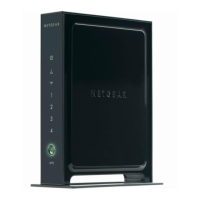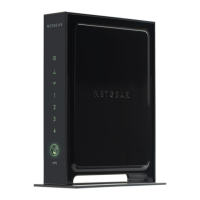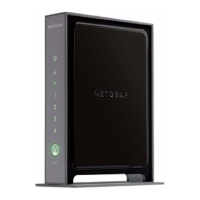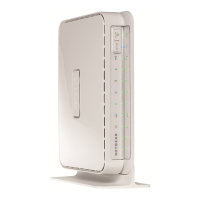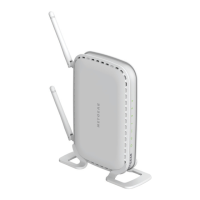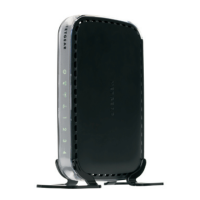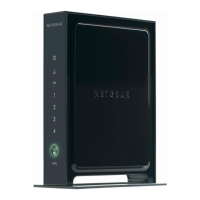
Do you have a question about the NETGEAR WNR2000v4 and is the answer not in the manual?
| Brand | NETGEAR |
|---|---|
| Model | WNR2000v4 |
| Category | Wireless Router |
| Language | English |
Instructions for unpacking the router, cables, and installation guide from the box.
Description of the router's front panel, including status LEDs and buttons.
Description of the router's back panel, including ports and connectors.
Information about the label on the back panel showing default login details.
Guidance on optimal placement of the router for best wireless signal range.
Step-by-step instructions for connecting the router to the modem and computer.
How to check router cabling by verifying LED status after connections.
Steps to prepare for router setup, including ISP information and device readiness.
Explanation of different login types (router, ISP, wireless network).
Guide to using NETGEAR genie for router setup via a web browser.
Instructions on how to check for and install new router firmware.
Overview of the basic home screen dashboard for router status.
Procedure to change the router's login password for security.
How to set up and use password recovery options.
Methods for connecting wireless devices to the network (Manual/WPS).
Configuration screen for viewing or changing ISP information and connection settings.
View or configure wireless network setup, including SSID and security.
View a list of all wired and wireless devices connected to the network.
Information on setting up Live Parental Controls to filter content.
Steps to set up a separate wireless network for guests.
Using the Setup Wizard for initial router configuration.
Guide to adding WPS-capable wireless devices to the network.
Accessing various setup menus like Internet, Wireless, and LAN settings.
Configure Wide Area Network (WAN) settings like DMZ, MTU, and port scanning.
Configure Local Area Network (LAN) settings, including DHCP server.
Quality of Service setup for prioritizing network traffic.
Prevent HTTP traffic by blocking specific keywords or domain names.
Block specific internet services or applications using port filtering.
Set up a schedule for when keyword or service blocking is active.
Configure email alerts for security events and log notifications.
Allow or block access to your network based on device MAC addresses.
Procedure to check for and install new firmware for the router.
Access and configure router logs for activity and security events.
Backup, restore, or erase router configuration settings.
Configure advanced wireless network settings like radio control and coexistence.
Schedule times to turn the wireless signal on or off.
Configure Wi-Fi Protected Setup (WPS) settings, including PIN management.
Configure the router to function as a wireless access point.
Set up the router as a base station or repeater in a WDS network.
Understand concepts of port forwarding and port triggering for network access.
Configure port forwarding rules to allow specific incoming traffic to local servers.
Configure port triggering to dynamically open inbound ports based on outbound traffic.
Configure Dynamic DNS service for accessing the network with a domain name.
Configure static routes for advanced network routing scenarios.
Enable and configure remote management for accessing the router over the Internet.
Turn on Universal Plug and Play for automatic device discovery and connection.
Set up various IPv6 internet connection types like Auto Detect and PPPoE.
Monitor and control internet traffic volume with usage limits.
View overall router status, internet port, and wireless settings.
Display hardware, firmware, and LAN port information.
Display MAC address, IP address, and connection status for the internet port.
View traffic statistics for WAN and LAN ports, including packet counts.
View connection status details for DHCP, PPPoE, or PPTP connections.
View wireless network name (SSID), channel, mode, and security settings.
View settings for the guest network, including SSID and isolation.
General tips for troubleshooting common router problems.
Diagnose issues by checking the status of router LEDs.
Troubleshoot when Internet or LAN port LEDs are not lit.
Steps to resolve issues preventing login to the router's interface.
Troubleshoot inability to access the internet despite router connectivity.
Check why configuration changes made in genie screens are not saved.
Diagnose problems with connecting wirelessly to the router.
Use the ping utility to troubleshoot network path issues.
Details of the router's factory default settings and how to restore them.
Specifications for the router, including protocols, power, and dimensions.
